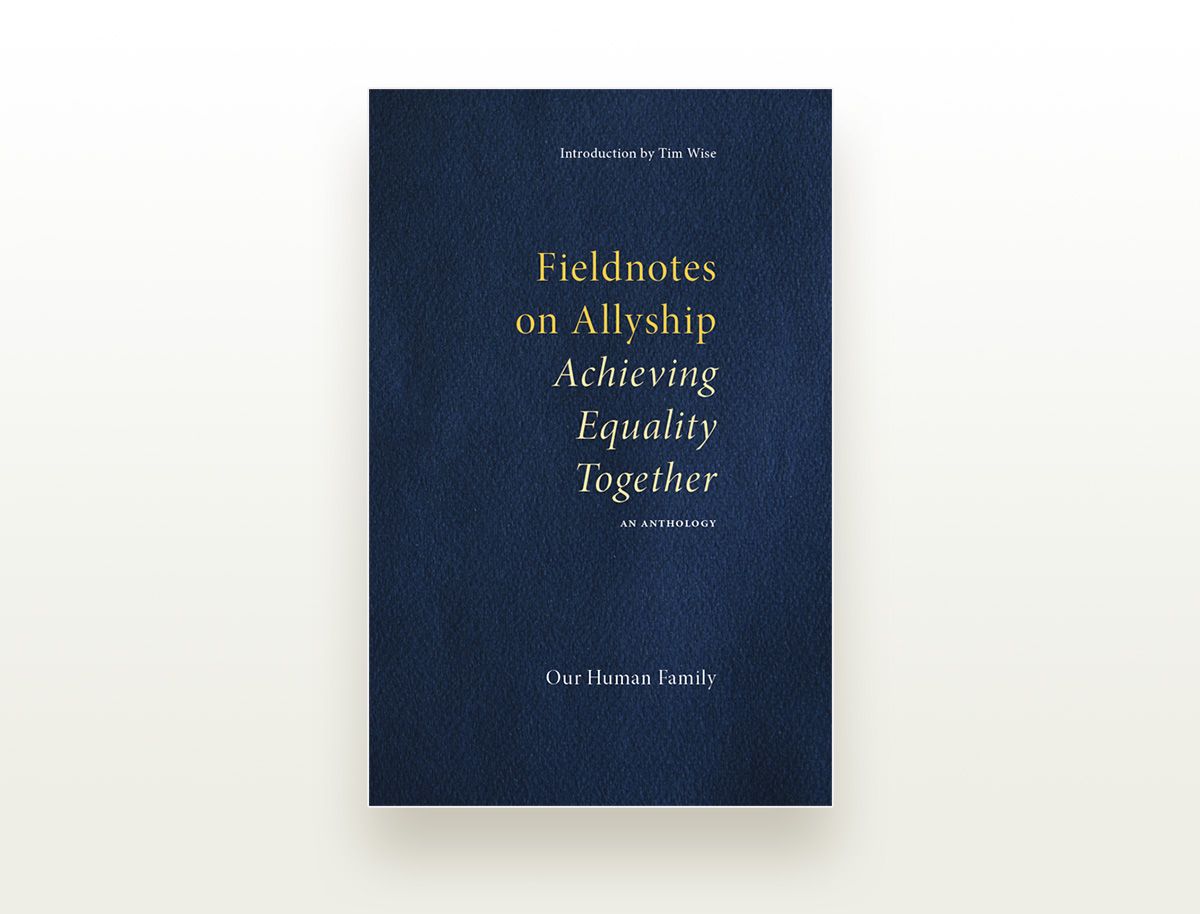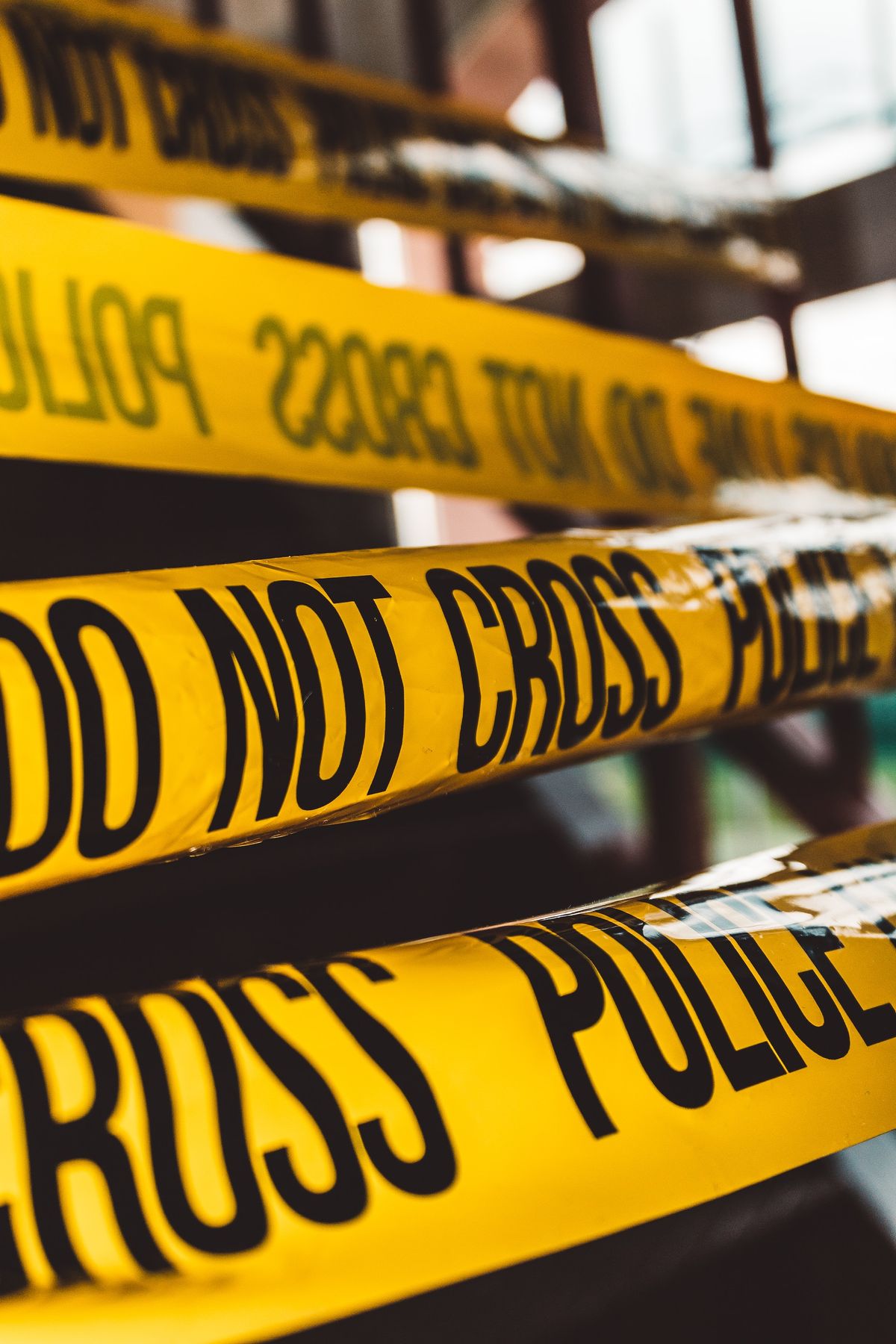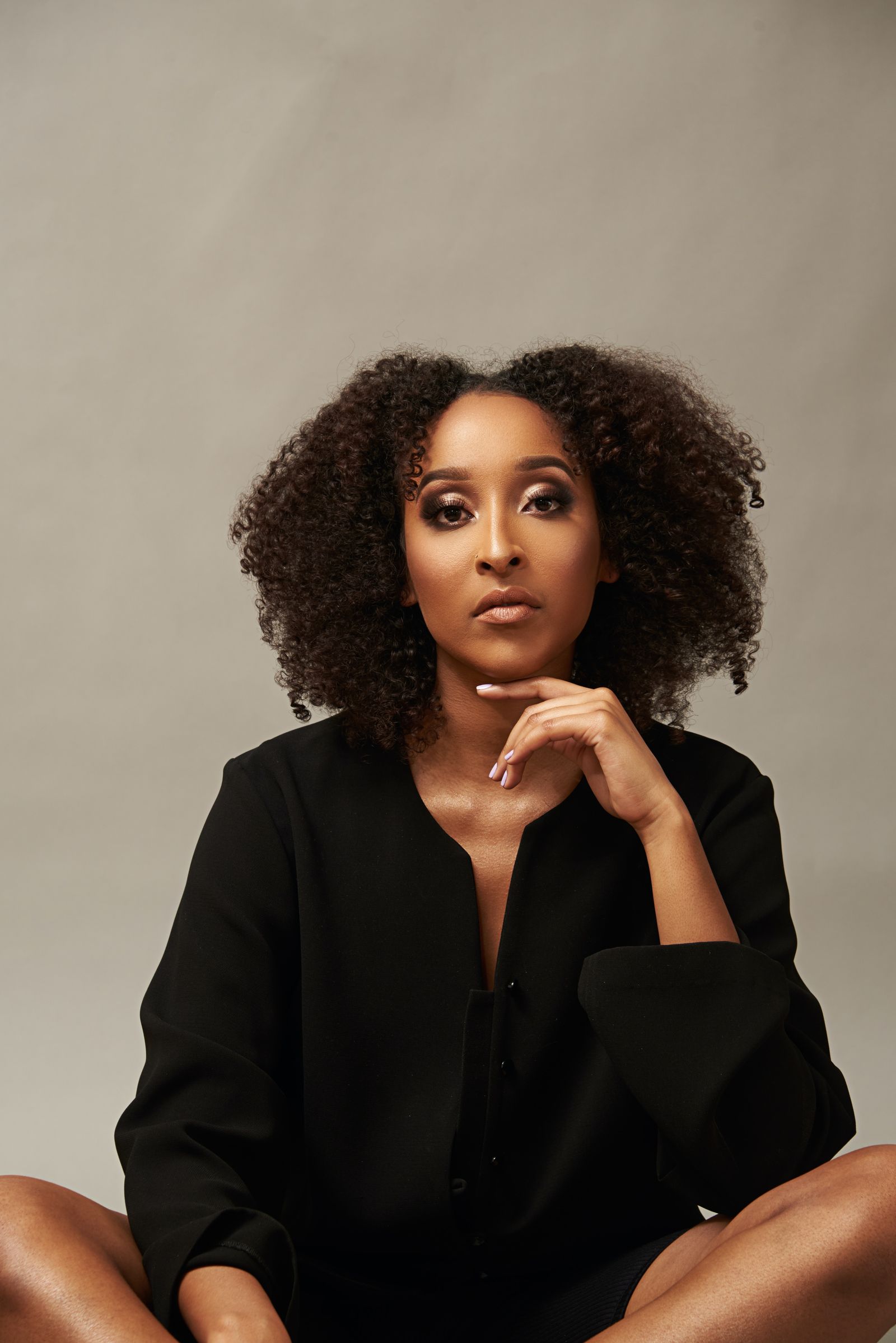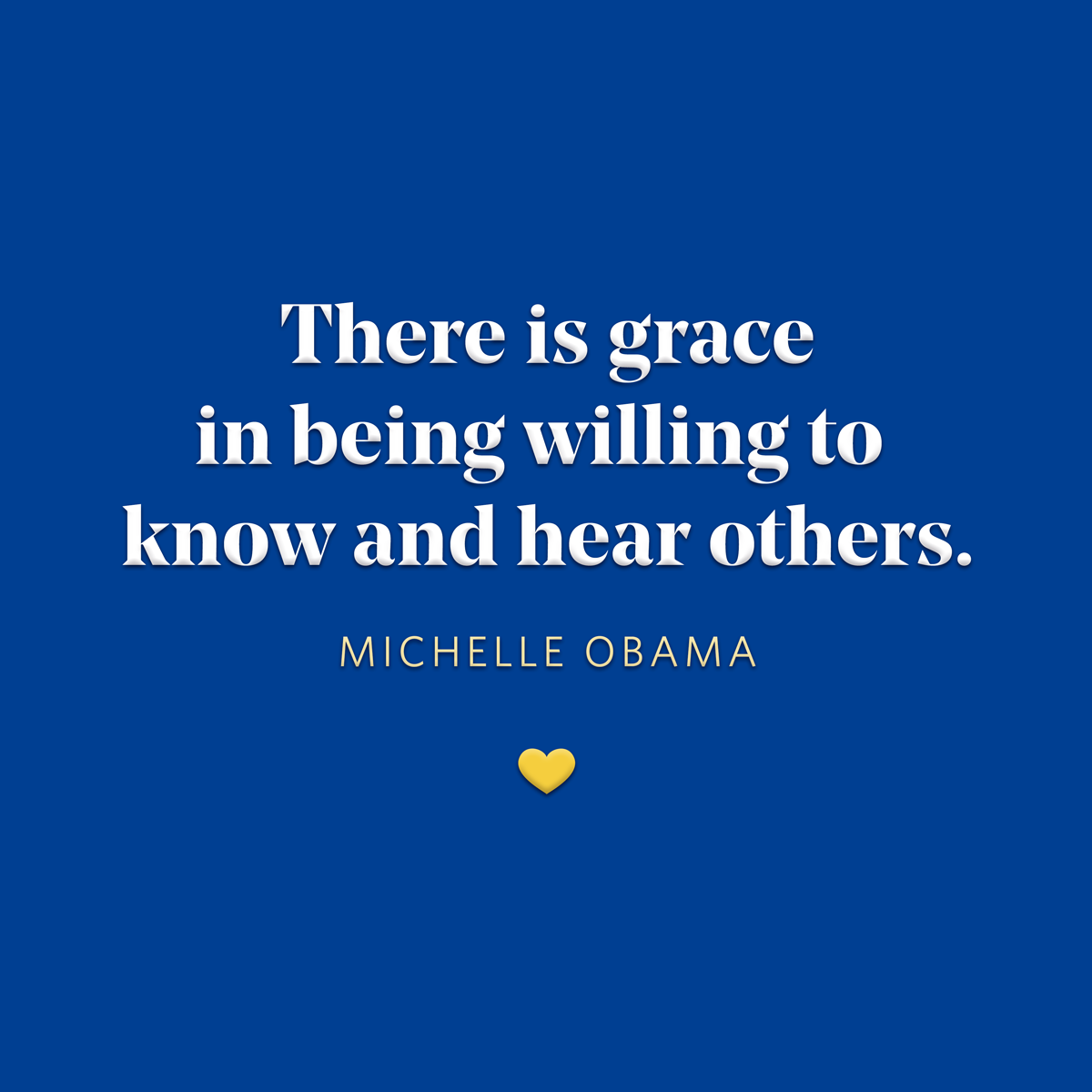|
OHF Weekly, Vol. 5 No. 16: Editor’s Letter, “You Can Know Me” by Christienne Leigh Hinz, and a quote by Michelle Obama.
Editor’s Letter💛 Hey Reader, Racism. It wears on me. Every other day there’s either some new legislation written to dehumanize the lives of Black, Indigenous, and People of Color or another incident of some white person shooting an unarmed Black person because they were “afraid for their life” — translation: they never had an affinity for “Blacks,” and thought they had the opportunity to kill one with impunity, so they did. Last week an Ohio grand jury declined to bring charges against the eight Akron police officers who fired forty-six shots into Jayland Walker, and then we learned about the eighty-four-year-old white man who shot sixteen-year-old Ralph Yarl twice—once in the head and once in the arm the boy used to protect his chest—for mistakenly ringing the man’s doorbell. To add insult to injury, the shooter was questioned for twenty minutes and then sent home to chill. It took most of a week to press charges. People, this is what racism armed with a gun looks like. Here’s the litmus test. What if the races of the teenager and the shooter were switched? Meaning, what if an eighty-four-year-old Black man shot a white teenager in the head and arm? We don’t have to ponder the situation at all. A Black shooter would have been met with the full force of the law and hauled off to jail before the teen could have left the shooter’s front porch. It’s not inconceivable that a Black shooter would’ve suffered physical abuse en route to jail if not an inexplicable death. If the Black shooter made it to jail alive, no doubt he would be charged posthaste with the most severe crimes possible. Why do I say this? Because it’s a fact that’s been documented many times over by the United States Sentencing Commission’s Booker Report. From Part E, Demographic Differences: The 2010 Booker Multivariate Analysis determined that demographic factors were associated with sentence length to a statistically significant extent during some of the time periods under study. Among other findings, the analysis showed that Black male offenders received longer sentences than similarly situated White male offenders . . .
Also from the Booker Report: Sentences of similarly situated Black male offenders were 19.5 percent longer than those of similarly situated White male offenders . . .
The consequences for Black people are always more severe. To assert anything less is intellectual dishonesty. Here’s the CliffsNotes version of that litmus test: If that had been a Black person . . . . Try it. For the record, I have never liked Florida. Well, that’s not entirely true. There had to be some point in my childhood when I wasn’t aware of the two Floridas. The one in which the sun always shines, doors of opportunity automatically swing open, and where the benefit of the doubt is a birthright brought to bear even when there is no doubt. The other in which Black people’s enjoyment of the same sunshine is subject to the whims of anyone white; where the doors of access are locked, barred, and welded shut for anyone darker than a paper sack; and presumption of guilt is never in doubt. My childhood occurred during the ’60s and ’70s. My parents and the parents of all my friends knew of Florida’s racial inequity. There was no way they couldn’t know about it. They had firsthand experience with it. They lived through Jim Crow, Rosa Parks, Emmett Till, Selma’s Bloody Sunday, the March on Washington for Jobs and Freedom, the murder of Malcolm X, and the assassination of the Rev. Dr. Martin Luther King, Jr. And while they did not share the most graphic details with us, the impact of white supremacy reverberated throughout our lives. I attended an all-Black elementary school where not only were our young minds educated, but our self-esteem was nurtured and cultivated. It’s not that we lacked self-assurance, but our parents, along with our predominantly Black teachers, were intimately familiar with the ways of white folks in Florida. They knew the adversary we would face in middle school, high school, and beyond: racism. Racism spoken and inflicted upon us by white classmates, teachers, and the populace writ large. To send us out into the world unprepared and unarmed, a healthy sense of self would be nothing less than an act of child endangerment. Our parents loved us too much for that. In junior high, some of our white classmates were the grandchildren of the same people who were embittered that we Black people would dare think of ourselves as equal to white people, deserving the same access to opportunity. Their parents disenfranchised, shot, and lynched our forebears in sundown towns only a few minutes away. See the Ocoee Massacre (1919), and the Groveland Four (1949), both towns less than thirty miles west of Orlando. I am not of the mind that all white people are racist, but there is no denying a great many white folks have the capacity to say things with no clue as to how insulting they are to Black people. Just this week, Monday in fact, on top of the news about Jayland Walker and Ralph Yarl, I had three different encounters with friends I’ve known for years that . . . well, you’ll see.
- Interaction No. 1: One person made an analogy that essentially put Black people in the same category as pit bulls.
- Interaction No. 2: Another person said that it cost too much for them to care about the increasing numbers of Black people killed in gun violence.
- Interaction No. 3: The third shared a meme with me that essentially mocked Black culture.
All three on the same day. Let me tell you, the struggle is real. I explained to all three in no uncertain terms that I found what they said insulting. I’ve known these three people for years and they are no doubt friends. We’ve been there for one another and have contributed to one another’s personal growth. I can say for a fact that these three people are not racists, but there is no denying their statements were racially demeaning, dismissive, and disrespectful respectively. Will I end the relationships? No. There was no malice intended and we took the time to talk about what happened. They took the time to listen and process what I had to say. Each and every one of them was deeply hurt to discover they had insulted me in such a profound way and couldn’t apologize fast enough. Mind you, these weren’t five-minute chats; they were heartfelt, long, conversations. We’ve put what happened behind us and they’ve given their word to be more aware of what they say. I can hear some of you now, “Well, that’s being a little too forgiving.” I’m treating them the way I’d want to be treated. When I screw up, I want people to tell me, and give me the opportunity to apologize and remedy the situation. But there’s more here that needs to be explored. The amicable resolutions I mention didn’t just happen. They’re the result of my willingness to possibly lose a friendship for the sake of clearing the air. If I didn’t tell them, how would they know? Another element was a mutual willingness to actively listen, to give one another the space to possibly make a misstep and course correct. That means listening without being defensive and speaking without seeking to injure or be right. My point is this: as long as there are people involved in relationships, there will be missteps; but we have to be willing to acknowledge that not everyone experiences the world the same way. And we have to be willing to hear as much as we are wanting to be heard. Those are key components to fixing racism. But getting back to the shooting of sixteen-year-old Ralph Yarl . . . What happened to him affects me deeply. I think of my sister and brother and aunts and uncles. Given the terrorizing fear that seems to seize some armed white men at the mere sight of Black men, I worry about the male members of my family. Unlike me, who stands four feet tall in my stocking feet—not that my stature provides any practical cloaking against racism or gun violence—they’re all tall, six feet and taller. I also think about my adult nieces and nephews, making their way in the world, all with children of their own finishing college or in grade school. What about them? How long until my family is touched by gun violence? If someone’s brimming with hate and armed they won’t see my relative as a talented epidemiologist at one of the nation’s premier public health agencies or a brilliant psychotherapist or loving parents or gifted children with their entire lives ahead of them—one of whom I’m sure will be an astronaut one day. I have similar concerns for my nieces, aunts, sister, and mother. They’ll see them as just another . . . [expletive]. Heaven forbid any of them cross paths with someone drunk on white supremacy yearning to obliterate the boundaries of decency by assaulting their humanity with a firearm. What now? Last Monday, after mulling over the aforementioned incidents with my friends, I took my musings to Mastodon (because Twitter has become a 100% dumpster fire) and poured my heart out in a simple statement: “You guys . . . this killing of Black men, women, and children is too much. It’s Just. Too. Much. And if you don’t know what I’m referring to THAT right there is part of the problem.” Without going into all the details, what followed was an enlightening conversation with people from all over the nation and different parts of the world. Events like these are gut-wrenching for a lot of people. They’re constantly in the news and the worst part is that no one seems to care—cops, district attorneys, everyone. Including you, unless you and I have talked about this. There’s a natural tendency for us to isolate and numb ourselves just to get through the day, which leads to a normalization of this. Daily mass shootings or individuals shooting children for ringing their doorbell or pulling into their driveway by mistake are not normal in any sense of the word. And yet we allow it to continue. I’m just thinking out loud here, but I’ve found that stepping back from the media’s firehose of information and actively doing the things that shore up my broken boundaries and refill my mental, emotional, and spiritual tanks always help. More than you know. Remember, no one’s going to look out for you like you. And if you have people who are depending on you, how can you effectively be there for them if you’re running on empty? But probably the most important thing anyone can do is to come out of their silo and reconnect with people, especially if they’re feeling broken. In reaching out to people I know and the greater community of people out in the world, I learned that many of us are feeling the same thing to a degree: despair, loneliness, frustration, defeat, and a sense of being buried beneath a huge mass of relentless tragedy and a stew of emotions. Friends, that’s a state of being overwhelmed. When we connect with people, we find out that we’re not alone in our experiences. There’s a misconception floating around that because the specific details of your experience are different from mine, I can’t know what you’re going through. That’s a lie. In talking about where we are and listening to where others are, we find that we really have way more in common than previously thought. But we have to be willing to approach and engage more than those who look and live like us. Am I saying hug a Nazi or take a white supremacist to lunch? No. But if you have one in your family, by virtue of your relationship with them you’re probably one of the people most likely to make an inroad. For those wondering, “What can I do now?” The simplest answer is: If you want things to change, then you’re going to have to contribute to that change. We all have to do something. Whatever you can, do it. But don’t remain silent. Don’t remain inactive, that’s how we got where we are now. Too many people let too many opportunities to do something pass. Read, learn, grow. Join like-minded people, not just those who look like you, and take a stand against the —isms. Anyone can start that process today. We’re living through an all-hands-on-deck crisis in this country and the more people who are actively involved, the better. Just know, people who embrace hate and bigotry didn’t get that way overnight. Don’t set yourself up for failure and disappointment by thinking a one-off interaction, conversation, or confrontation will magically change someone’s thinking. It’s going to take time. Think of it as planting seeds, not changing a racist’s mind. Yes, I know this was a long-ish editor’s letter. There was a lot I wanted to address and this is still only scratching the surface. Please feel free to leave me comments at the bottom of the newsletter. The following article, “You Can Know Me” by Christienne Leigh Hinz is a masterclass in understanding why the experiences of Black people are shockingly far more knowable than most white people realize. After you’ve had a moment to process my letter, I encourage you to find a quiet place and drink in her article. It will change your life. For the better. Love one another. Clay Rivers
OHF Weekly Editor-in-Chief
FROM OUR WRITERSYou Can Know MeIf Black people can develop and refine metaphors to understand the white experience (in all of its constituent complexity, pain and privilege), how is it that white people are excused from understanding the Black experience? By Christienne Leigh Hinz To my white allies: I do not speak for the African American community, a diverse and contentious group, regardless of the historical and contemporaneous experiences that we, its members, share. And it may be an error of judgement to offer my thoughts in open forum. Many self-described allies suffer a limited capacity for self-reflection and need to cultivate more deeply the art of circumspection before joining the conversation. I choose, nevertheless, to speak to those white friends, neighbors, and family who have asked me, time and again, how to be “better allies,” how to support my family and me through the upheaval of our current moment, and beyond. This is my partial reply. We all can agree that America right now is experiencing a pivotal moment in racial history. People of color and our allies, a greater cross section of the American public than ever before, have come together to roar a definitive, “no!” to state-sponsored terrorism against its Black citizens. Think of that shout as a unified and unifying musical composition—let’s say a cantata—in opposition to 400 years of cumulative social, economic, racial, and juridical injustice. You and I—we—the composers, try various melodies, rhythms, voicing, and musical structures as we develop the score. Allow me to draw your attention to a refrain that I believe requires careful reconsideration. The area of concern appears in the first movement of our score, in the very first stanza marked molto pianissimo: “White people can’t know what it’s like to be a Person of Color.” Next stanza, accentato: “The Black experience has been uniquely torturous and is fundamentally incomprehensible to the white mind.” Stanza three, dolce, “White Americans can never hope to understand Black pain and must never pretend empathy.” Stanza four, astinato: “White can’t know Black pain white can’t know Black pain,” closing with a repeat. We have already agreed that Black voices must carry the composition’s central melodies. We have agreed also that Black voices must order both rhythm and tempo. But the introduction of the white voice in the second bar of the first stanza is premature, contrived, and thoroughly unconvincing. The augmented 7th chord, with all of its violent, frightful, discordant tension, is a sound opening; and its inherent anxiety carries well across the entirety of the movement. But why have we written white inability to comprehend or empathize with the Black experience into our “shared” composition? Where did this theme come from? Whose purpose and what purpose does it serve? Mandatory Empathy I find the notion that white friends and allies are incapable of understanding or empathizing with my experience as an African American astonishing, unnerving, and frankly unbelievable. There are very good reasons why this idea is part of Black discourse about race relations. Discourse has history; history is narrative, and narrative always operates at the nexus of competing claims to power. But discourse is not always and everywhere necessarily true. Black leaders and white people who try to respond to their cues about good allying, have accepted this discourse as truth outside of its history, outside of its purpose. This ready acceptance of white inability to either understand or empathize with the Black experience is one-part appropriate humility, one-part disingenuous genuflection, and three-parts structurally racist ideology that abrogates their responsibility to understand it and to empathize with it. At best it is banal: no one can truly understand what it is to walk in another’s shoes. At worst, it’s another form of white Othering. It dehumanizes me. It dehumanizes you. It’s lazy; it’s a lie, and I want no truck with it. Robert Frost argued that all knowing is metaphor. I agree. The Homo sapiens brain evolved for symbolic thinking and symbolic communication. Metaphor and simile are two of the most powerful hard-wired tools we use to explore, understand, navigate, communicate, and even create our world. To insist that humans stop using similes to understand each other is akin to asking us to willfully stop breathing. We can’t. Metaphors and similes are the chassis upon which we come-to-know. Mindfully crafting them is a necessary step in building human empathy. Empathy is altogether different from sympathy, which is of no interest to me. Pity’s kissing-cousin requires neither knowing nor action. It merely greases social gears between indifferent strangers. Read the full article at OHF Weekly.
Fieldnotes on Allyship: Achieving Equality Together Fieldnotes on Allyship: Achieving Equality Together available just about everywhere. The RecapIn the aftermath of the murder of George Floyd, people are speaking out against systemic racism and the killing of Black Americans by law enforcement officers. Unprecedented numbers of people—of all demographics—are participating in peaceful marches and demonstrations in support of Black Lives Matter across the country. There are many more who want to get involved, but demonstrations are not an option. And they’re unsure what to do. The BookFieldnotes on Allyship: Achieving Equality Together is an informal and informative guide to becoming an effective ally and covers four areas: 1) how we as a nation got here, 2) identifying the forces that maintain systemic racism, 3) preparing to be an ally, and 4) serving as an ally. The ConceptFieldnotes on Allyship is rooted in research scientists’ practice of taking notes on phenomenon they study while out in the field. These fieldnotes are then used as evidence to aid understanding. Ours isn’t an academic or theoretical book. This collection of real-world observations informs people: - that embracing a more equitable worldview is possible, and
- shows them how to support the movement.
The DetailsFieldnotes on Allyship is an anthology by eighteen authors from the United States and around the world. They include anti-racism activists, authors, anthropologists, artists, a Masters Athlete, college professors, retired Navy, a lawyer, mothers, fathers, daughters, sons, sisters, and brothers, all of various ethnicities. Fieldnotes on Allyship is the first collaborative effort of your friends at OHF. The writers include: Want to Read an Excerpt?No problem! We can do that—enjoy! Excerpt from Fieldnotes on Allyship: Achieving Equality Together. AvailabilityFieldnotes on Allyship: Achieving Equality Together is available in print at Amazon for $14.99. The digital versions for Kindle-ereaders and iPad/iPhone and Nook devices can be found at ourhumanfamily.org for $9.99; that’s 20% less than anywhere else on the internet. We hope you enjoy this labor of love for humanity as much as we had producing it.
Final Thoughts
|



